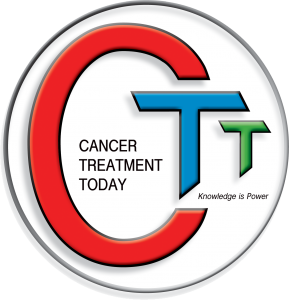Pomalidomide in combination – pro
In combination, there are several supporting publications. First, it appears effective with steroids. Alos, there is a recent 1/2 trial to determine the maximum tolerated dose (MTD) of pomalidomide and to explore its efficacy when combined with cyclophosphamide-prednisone in relapsed/refractory myeloma patients. Pomalidomide was given at 1 to 2.5 mg/d, cyclophosphamide at 50 mg every other day, prednisone at 50 mg every other day, for 6 28-day cycles, followed by pomalidomide-prednisone maintenance therapy. Thromboprophylaxis was recommended. Sixty-nine patients were enrolled, 55 received the MTD (2.5 mg/d) and were evaluated. Best responses included complete response in 3 patients (5%), very good partial response in 10 (18%), partial response in 15 (27%), minimal response in 11 (20%), stable disease in 15 (27%), and progressive disease in 1 (3%), for an overall response rate of 51%. The median time-to-response was 1.83 months. After a median follow-up of 14.8 months, median progression-free survival was 10.4 months and 1-year overall survival was 69%. At the MTD, grade 3 to 4 toxicities included anemia (9%), thrombocytopenia (11%), neutropenia (42%), neurologic events (7%), dermatologic events (7%), and thromboembolism (2%). Grade 3 to 5 infections occurred in 5 patients (9%). Five patients (9%) discontinued treatment for toxicity. New grade 3 to 4 adverse events were low during maintenance. The authors concluded that Pomalidomide-cyclophosphamide-prednisone is safe and effective in relapsed/refractory myeloma patients.
Among patients with early relapse, the use of a 3-drug regimen (bortezomib, thalidomide, and dexamethasone) improved overall response rate (ORR), depth of response, and progression-free survival with a trend toward improved overall survival. Therefore, using combinations of pomalidomide off-lable inc combination is supported by current medical literature.
Treating in MGUS or smoldering myeloma for Neuropathy:
Pomalyst is usually given with it appears effective with steroids. Pomalyst® (pomalidomide, Celgene) is an oral medication that is taken along with dexamethasone. The recommended starting dose of Pomalyst is 4 mg once daily for three out of four weeks (days 1-21 of each 28-day cycle).
While this drug is not usually used for early myeloma, like here, there is the question of neuropathy. I agree that treatment of neuropathy in early myeloma requires treatment of the underlying disease. Unfortunately, there is no literature supporting such diffuse in this disease. Because this drug can itself cause neuropathy, patients with pre-existing neuropathy were excluded from clinical trials.Therefore the treatment plan including dosing regimen is not medically necessary for the condition being treated.
Alessandra Larocca et al, Pomalidomide, cyclophosphamide, and prednisone for relapsed/refractory multiple myeloma: a multicenter phase 1/2 open-label study. October 17, 2013; Blood: 122 (16)
Schey S, Ramasamy K. Pomalidomide therapy for myeloma. Expert Opin Investig Drugs 2011;20(5):691-700.CrossRefMedlineLacy MQ, Hayman SR, Gertz MA, et al. Pomalidomide (CC4047) plus low-dose dexamethasone as therapy for relapsed multiple myeloma. J Clin Oncol 2009;27(30):5008-5014.Abstract/FREE Full Text
Lacy MQ, Allred JB, Gertz MA, et al. Pomalidomide plus low-dose dexamethasone in myeloma refractory to both bortezomib and lenalidomide: comparison of 2 dosing strategies in dual-refractory disease. Blood 2011;118(11):2970-2975.
M A Dimopoulos et al, Expert panel consensus statement on the optimal use of pomalidomide in relapsed and refractory multiple myelomaLeukemia (2014) 28, 1573–1585;
